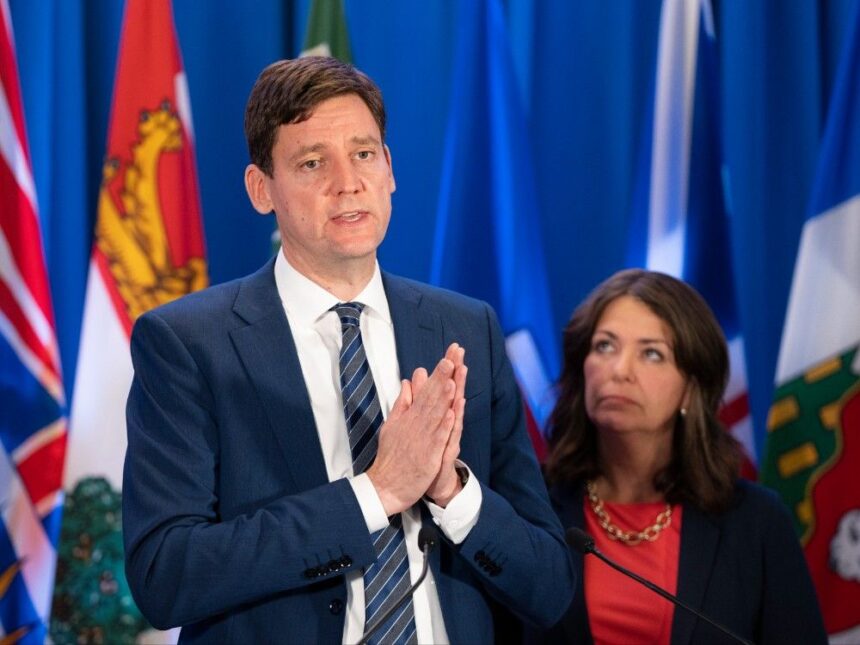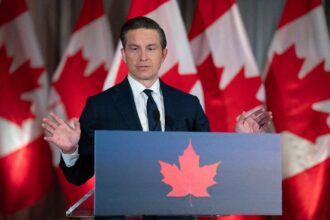In a measured response that underscores the complex relationship between provincial economic interests and environmental commitments, British Columbia Premier David Eby has expressed significant reservations about Alberta Premier Danielle Smith’s proposal to resurrect the controversial Northern Gateway pipeline project. The potential revival of this decade-old pipeline initiative has reignited the long-standing tension between Canada’s energy ambitions and climate obligations.
“We’ve been very clear as a government about our concerns about diluted bitumen being shipped through B.C. waters,” Eby stated during a press conference on Wednesday, highlighting the environmental risks that continue to shadow the project. “Those concerns haven’t changed.”
The Northern Gateway pipeline, originally rejected by the Trudeau government in 2016, would transport approximately 525,000 barrels of oil daily from Alberta’s oil sands to Kitimat, B.C., creating a new export route to Asian markets. Premier Smith has positioned the revival as an economic necessity, pointing to Canada’s evolving relationships with oil-consuming nations, particularly in light of geopolitical shifts affecting global energy markets.
The divergent perspectives between the two provincial leaders reflect deeper national divisions on energy development. While Smith champions energy security and economic growth through resource development, Eby’s administration has prioritized environmental protections and Indigenous reconciliation—two factors that significantly contributed to the project’s initial demise.
Indigenous consultation remains a critical sticking point. The Federal Court of Appeal overturned the project’s initial approval in 2016, citing inadequate consultation with affected First Nations. Many coastal Indigenous communities continue to express profound concerns about potential oil spills and their devastating impact on traditional territories and marine ecosystems.
“Our government remains committed to our climate plan,” Eby emphasized, referencing B.C.’s CleanBC strategy. “We’re working to reduce carbon pollution while building a cleaner economy that works better for people.”
The federal government’s position adds another layer of complexity. Prime Minister Justin Trudeau’s administration has maintained public commitment to both climate action and responsible resource development, creating what many political analysts describe as a delicate balancing act in Canadian energy policy.
Energy economists note that the economic landscape has shifted substantially since Northern Gateway was first proposed. “Global investors are increasingly scrutinizing carbon-intensive projects,” explains Dr. Amelia Richardson, energy policy specialist at the University of Toronto. “Any revival would face not just regulatory hurdles but potentially challenging market conditions and financing constraints that didn’t exist a decade ago.”
The proposal emerges against a backdrop of Canada’s evolving energy infrastructure. While the Trans Mountain pipeline expansion nears completion, increasing Canada’s oil export capacity to the Pacific, questions remain about the long-term demand for fossil fuel infrastructure in a world increasingly pivoting toward renewable energy sources.
Environmental organizations have already signaled readiness to mobilize against any revival attempts. “Northern Gateway was rejected for good reasons—environmental protection, Indigenous rights, and climate commitments,” said Michael Hartley of the Pacific Conservation Alliance. “Those reasons haven’t disappeared; they’ve become more urgent.”
As this renewed debate unfolds, the fundamental question remains: can Canada reconcile its status as a major energy producer with its climate commitments and obligations to Indigenous peoples? The tension between these priorities continues to define Canadian energy politics and will shape the country’s economic and environmental trajectory for decades to come.










